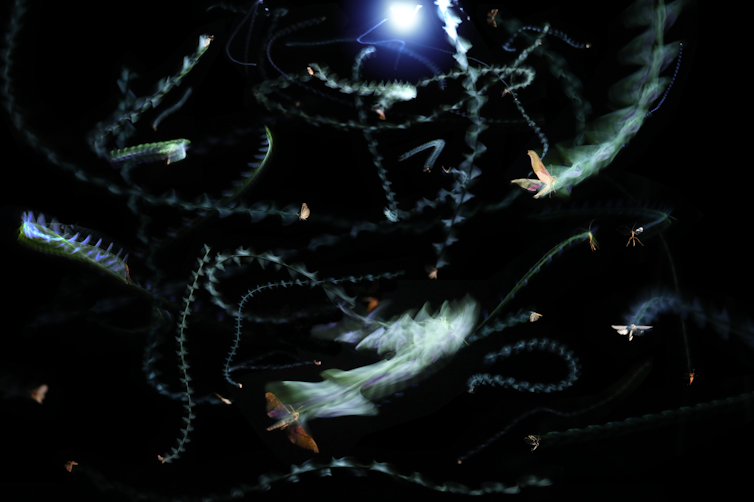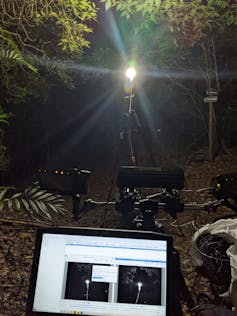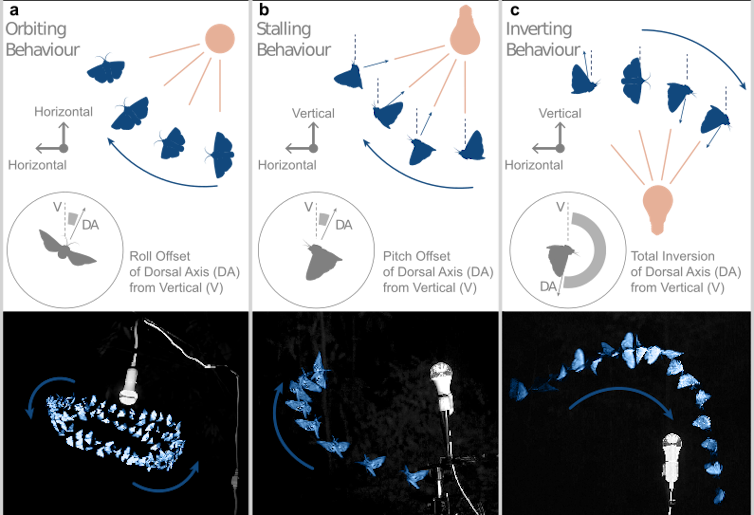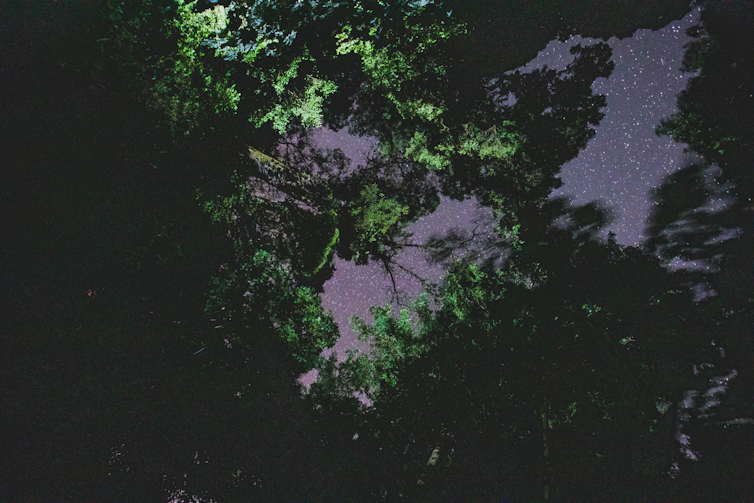Lifestyle
The surprising reason why insects circle lights at night: They lose track of the sky

Samuel Fabian, CC BY-ND
It’s an observation as old as humans gathering around campfires: Light at night can draw an erratically circling crowd of insects. In art, music and literature, this spectacle is an enduring metaphor for dangerous but irresistible attractions. And watching their frenetic movements really gives the sense that something is wrong – that instead of finding food and evading predators, these nocturnal pilots are trapped by a light.
Sadly, centuries of witnessing what happens have produced little certainty about why it happens. How does a simple light change fast, precise navigators into helpless, flittering captives? We are researchers examining flight, vision and evolution, and we have used high-speed tracking techniques in newly published research to provide an answer.
Moths to a flame?
Many old explanations for this hypnotic behavior have not fully panned out. An early notion was that the insects might be attracted to the heat of a flame. This was interesting, as some insects really are pyrophilic: They are attracted to fire and have evolved to take advantage of conditions in recently burned areas. But most insects around a light are not in this category, and cool lights attract them quite well.
Another thought was that insects were just directly attracted to light, a response called phototaxis. Many insects move toward light, perhaps as a way to escape dark or entrapping surroundings. But if this were the explanation for the clusters around a light, you might expect them to bump straight into the source. This theory does little to explain the wild circling behavior.
Still another idea was that insects might mistake a nearby light for the Moon, as they attempted to use celestial navigation. Many insects reference the Moon to keep their course at night.
This strategy relies on how objects at great distance seem to hover in place as you move along a straight path. A steady Moon indicates that you have not made any unintentional turns, as you might if you were buffeted by a gust of wind. Nearer objects, however, don’t appear to follow you in the sky but drift behind as you move past.
The celestial navigation theory held that insects worked to keep this light source steady, turning sharply in a failed attempt to fly straight. An elegant idea, but this model predicts that many flights will spiral inward to a collision, which doesn’t usually match the orbits we see. So what’s really going on?

Samuel Fabian, CC BY-ND
Turning their backs to the light
To examine this question in detail, we and our colleagues captured high-speed videos of insects around different light sources to precisely determine flight paths and body postures, both in the lab at Imperial College London and at two field sites in Costa Rica, CIEE and the Estación Biológica. We found that their flight patterns weren’t a close match for any existing model.
Rather, a broad swath of insects consistently pointed their backs toward the lights. This is a known behavior called the dorsal light response. In nature, assuming that more light comes down from the sky than up from the ground, this response helps keep insects in the proper orientation to fly.
But pointing their backs toward nearby artificial lights alters their flight paths. Just as airplanes bank to turn, sometimes rolling until the ground seems nearly straight out your window, banking insects turn as well. When their backs orient to a nearby light, the resulting bank loops them around the light, circling but rarely colliding.
These orbiting paths were only one of the behaviors we observed. When insects flew directly under a light, they often arched upward as it passed behind them, keeping their backs to the bulb until, eventually flying straight up, they stalled and fell out of the air. And even more compelling, when flying directly over a light, insects tended to flip upside down, again turning their backs to the light but then abruptly crashing.

Jamie Theobald, CC BY-ND
Why have a dorsal light response?
Although light at night can harm other animals – for example, by diverting migrating birds into urban areas – larger animals don’t seem to lose their vertical orientation. So why do insects, the oldest and most species-rich group of flyers, rely on a response that leaves them so vulnerable?
It may have to do with their small size. Larger animals can sense gravity directly with sensory organs pulled by its acceleration, or any acceleration. Humans, for example, use the vestibular system of our inner ear, which regulates our sense of balance and usually gives us a good sense of which way is down.
But insects have only small sensory structures. And especially as they perform rapid flight maneuvers, acceleration offers only a poor indication of which way is down. Instead, they seem to bet on the brightness of the sky.
Before modern lighting, the sky was usually brighter than the ground, day or night, so it provided a fairly reliable cue for a small active flyer hoping to keep a steady orientation. The artificial lights that sabotage this ability, by cueing insects to fly in circles, are relatively recent.
The growing problem of nighttime lighting
As new technology spreads, lights that pervade the night are proliferating faster then ever. With the introduction of cheap, bright, broad-spectrum LEDs, many areas, such as large cities, never see a dark night.

Samuel Fabian, CC BY-ND
Insects aren’t the only creatures affected. Light pollution disrupts circadian rhythms and physiological processes in other animals, plants and humans, often with serious health consequences
But insects trapped around a light seem to get the worst of it. Unable to secure food, easily spotted by predators and prone to exhaustion, many die before the morning comes.
In principle, light pollution is one of the easiest things to fix, often by just flipping a switch. Restricting outdoor lighting to useful, targeted warm light, no brighter than necessary, and for no longer than necessary, can greatly improve the health of nocturnal ecosystems. And the same practices that are good for insects help restore views of the night sky: Over one-third of the world population lives in areas where the Milky Way is never visible.
Although insects circling around a light are a fascinating spectacle, it is certainly better for the insects and the benefits they provide to humans when we leave the night unlit and let them go about the activities they so masterfully perform under the night sky.![]()
Samuel Fabian, Postdoctoral Research Associate in Bioengineering, Imperial College London; Jamie Theobald, Associate Professor of Biological Sciences, Florida International University, and Yash Sondhi, Postdoctoral Research Associate in Entomology, Mcguire Center for Lepidoptera & Biodiversity, Florida Museum of Natural History, University of Florida
This article is republished from The Conversation under a Creative Commons license. Read the original article.





















